Microsoft Surfaces at the Super Bowl: What You Need to Know About Those Little Blue Tablets
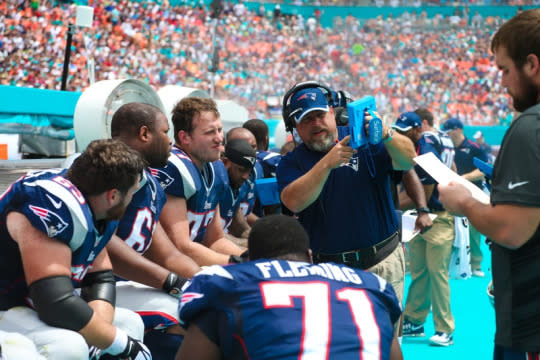
During this weekend’s Super Bowl, while most viewers will be focusing on the game, the halftime show, and the ads (not necessarily in that order), true geeks will be keeping an eye on the sidelines.
They’ll be looking for Microsoft Surface 3’s — the tablets in the bright blue cases that have become standard equipment at NFL games this season. Here’s how they got there, and why you might want to keep an eye out for them too.
So what’s the deal?
In 2014, Microsoft and the NFL signed a $400 million, five-year contract that (among other things) made Microsoft the official sideline technology sponsor of the NFL, putting Surface tablets in the hands of players and staff. (It also gave Microsoft the right to create NFL-based content for its Xbox One and Surface platforms.)
Those tablets — Microsoft supplies 13 per game per team for the sidelines, and another 12 up in the coaching booths — are intended to replace the old paper-print-outs-in-a-binder system that teams had used for years to analyze the game as it progressed, assessing how well the plays they were running were working and how their opponents were responding.
How does it work?
Of course, teams aren’t just going down to the Microsoft Store and grabbing a bunch of Surfaces off the shelf. These tablets are customized for sideline use.
For one thing, they’ve been specially ruggedized to withstand some of the extreme conditions to be expected on America’s football fields. That means they’re designed to withstand snow, rain, and temperatures down to 45 below zero Fahrenheit. Those distinctive blue cases include slide-in hand-grips, so players don’t have to worry about dropping them. (More on that in a bit.)
The software those Surfaces run — or, more accurately, the app — is specialized, too. Players won’t be tempted to play a quick bit of Clash of Clans during the game, because the tablets run only one program: the Sideline Viewing System (SVS), provided by Microsoft.
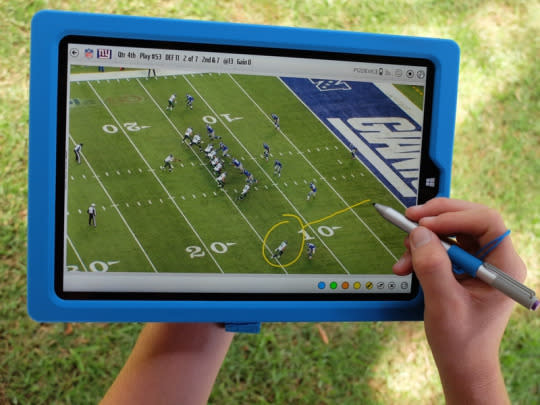
The Sideline Viewing System (Photo: Microsoft)
In-game cameras take shots of every play. Those shots are sent to Surfaces in the coaching booth, where team staffers use the SVS to annotate and highlight them. Those annotated shots are then sent down to players on the sidelines, where they can see their coaches’ analysis of what’s working in the game plan and what isn’t.
That communication relies on secure networking within the stadium. For this Sunday’s Super Bowl, NFL CIO Michelle McKenna-Doyle has said that she and her team are (for reasons I’ll explain in a second) “double- and triple-checking network connections” at Levi’s Stadium in Santa Clara, Calif.
How’s it working out?
The deal has certainly given Surface tablets some widespread exposure, potentially loosening the stranglehold that the iPad has on the public imagination. Unfortunately, that exposure hasn’t always been flattering.
For example, two weeks ago, during the first quarter of the Patriots-Broncos playoff game, the Patriots’ tablets froze, leaving them temporarily unable to do their usual in-game analysis.
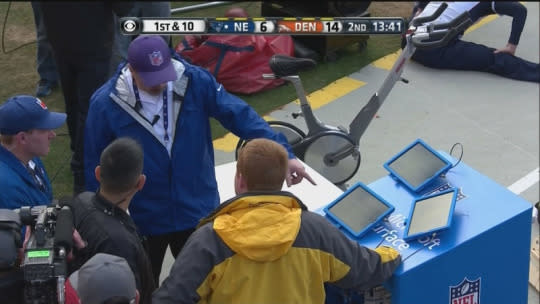
(Photo: SBNation.com)
Patriots coach Bill Belichick didn’t blame his team’s loss on that outage, of course. But he did call such malfunctions “a pretty common problem.” He also noted that his team — as well as others — still uses the old black-and-white-photos system as a backup.
In response, Microsoft’s Yusuf Mehdi (corporate vice president of the company’s Windows and Devices Group) quickly posted a blog defending his tablet, pointing out that it was the stadium network, not the tablets, that had failed. But for many TV viewers, who were treated to images of flustered Patriots players and coaches holding the nonfunctioning tablets, that distinction was probably lost. (Microsoft declined our invitation to comment on the matter.)
Other images haven’t helped, either. Earlier in the regular season, Green Bay quarterback Aaron Rodgers was seen throwing a Surface to the ground in frustration. Actually, he was frustrated with an interception he’d just thrown (and was no doubt re-viewing in the SVS), and not with the tablet itself. But the optics weren’t good.
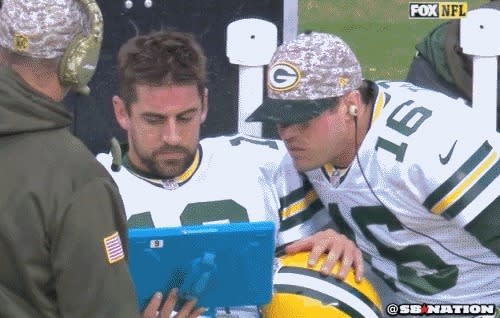
Ditto for the game in which Cleveland backup QB Johnny Manziel was seen smacking himself in the noggin with a Surface. Again, he was just taking out his frustrations about his own play, not with the tablet. But images combining visible frustration with Surface Tablets probably aren’t what Microsoft was hoping to buy with its $400 million.
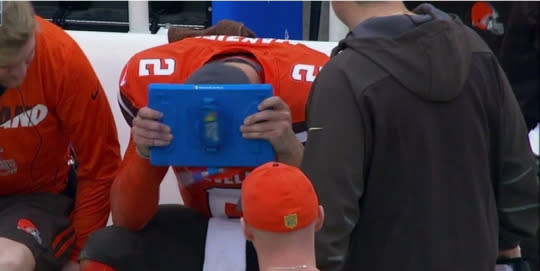
And even when the Surfaces are working perfectly, Microsoft isn’t always getting the marketing boost it might want: Announcers have been known to identify them as “iPad-like tools.” You can imagine a few folks in Redmond might be smacking themselves in the head with frustration over that one.
Dan Miller will be too busy eating chili to actually watch the game; he’ll just follow the commentary on Twitter.
More Super Bowl coverage from Yahoo Tech: